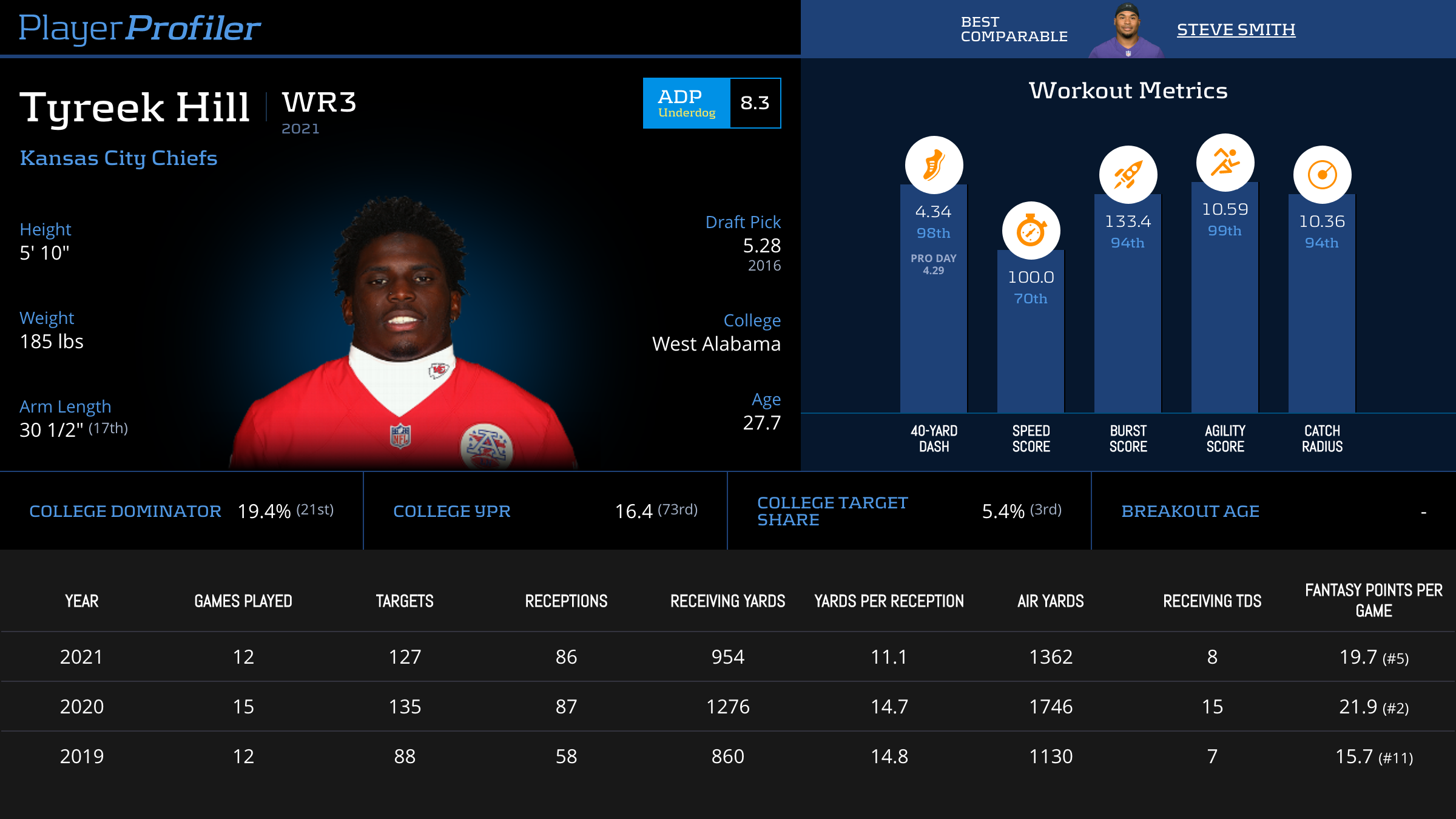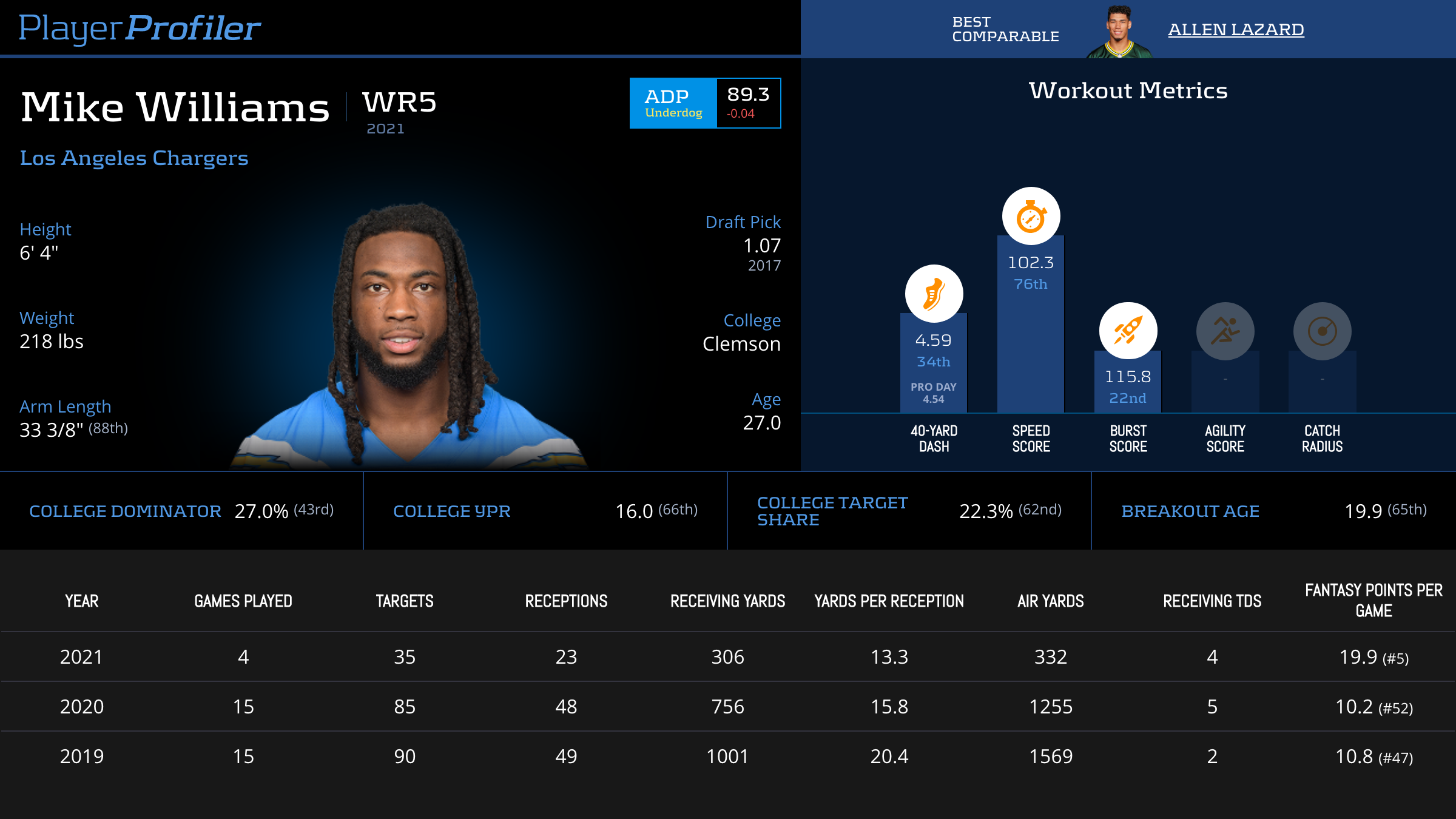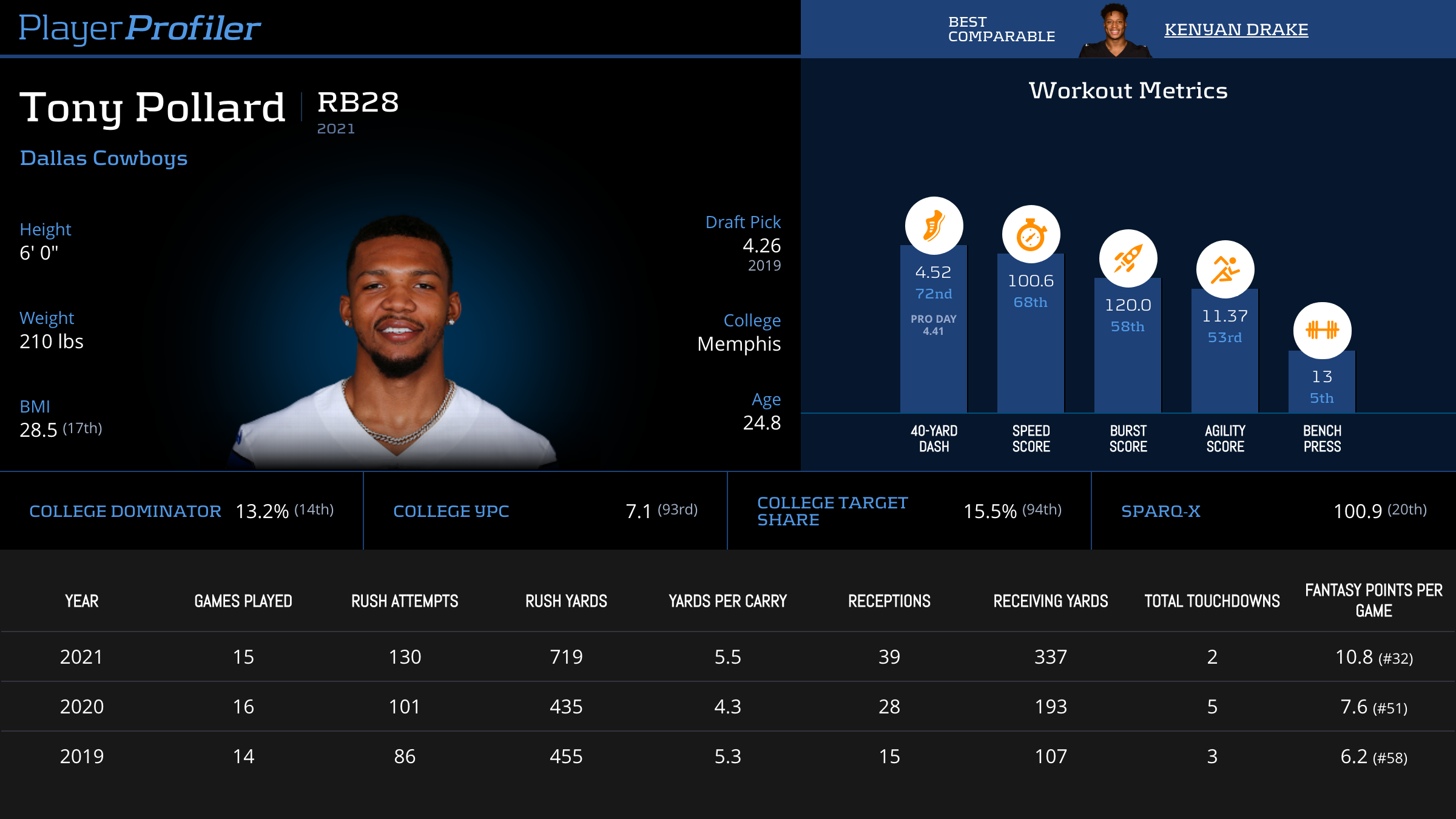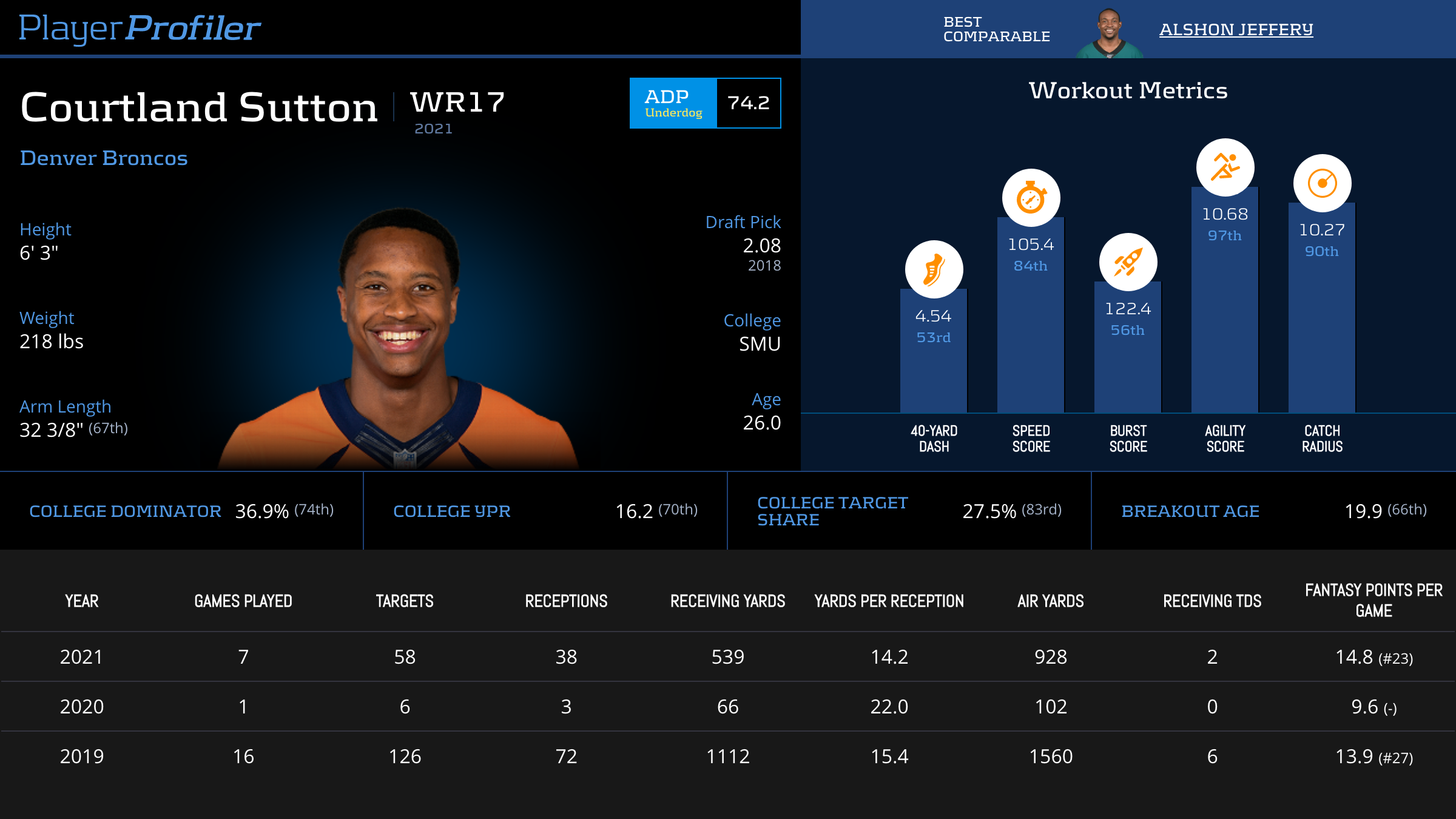Last season, Cooper Kupp had one of the most productive WR seasons ever. He led the league in receptions (145), TD receptions (16), and receiving yards (1947). By simply drafting Kupp, fantasy managers gave themselves a chance at winning their league titles. But what gets lost in the shuffle is Kupp was being drafted a few spots behind his teammate in Robert Woods. Woods did not lead managers to fantasy titles, to say the least. Kupp proved to be the one of the best discounted positional values of all time in fantasy football.
How Did Fantasy Gamers Miss?
How could a situation so imbalanced be misread by such a large portion of analysts and high-stakes drafters? And how did it happen so many times last season?
A few spots down from Kupp among WR scoring leaders was WR3 overall finisher, Deebo Samuel. Samuel was a seventh-round steal, obliterating his ADP with a 20.7 PPR fantasy points per game average. Like Kupp, Samuel was selected over 30 spots behind teammate Brandon Aiyuk. Last year’s WR5 overall, Ja’Marr Chase, was drafted behind Tee Higgins. Both beat their ADPs, but Chase averaged over three fantasy points per game more than Higgins and, like Samuel and Kupp, helped tilt leagues.
Misreads
The running back position also saw massive misreads of players on teammate positional hierarchies. RB5 overall Leonard Fournette smashed his ninth and tenth round ADP. He averaged 18.3 fantasy points per game and was a cheat code for Zero RB and Hero RB teams that waited on RB. He was drafted a few spots behind Ronald Jones. James Conner saw similar production as Fournette with an RB8 overall finish behind 18 touchdowns. Yet again, he was being drafted behind another RB on his team. Connor was going three rounds behind Chase Edmonds.
We saw other cases of lesser drafter players badly outscoring their teammates: Darnell Mooney over Allen Robinson, Devin Singletary over Zack Moss, and Dalton Schultz over Blake Jarwin. Despite the round the clock NFL coverage, and constant fantasy football information, the ADP markets got it wrong, a lot.
What are some of the situations this year we need to reanalyze?
(All ADP From FFWC $350 Player Profiler Championship Drafts)
Tyreek Hill (No. 16) vs. Jaylen Waddle (No. 35)
This feels like a decision that can tilt leagues. Hill has been living in the second round in all formats and occasionally can dip into the third. Jaylen Waddle is usually drafted at the end of the third-round but sometimes slips to the fourth. Who do we target?
It is easy to get enamored with Tyreek Hill. No one can change the course of an NFL game and drop the fantasy hammer on an opponent like Hill. The Miami Dolphins sent five draft picks, including a 2022 first-rounder, to acquire Hill this past offseason and then went and paid him $52 million guaranteed in a massive four-year deal. This is not an Amari Cooper situation where a player was acquired cheaply. Hill cost Miami a fortune in both draft capital AND money. Miami will want a return on investment, and Hill should see a sizable role. Hill can also benefit from some Deebo Samuel-like manufactured rushes. (Hill has over 700 yards rushing and 6 touchdowns in his career).
Too Expensive?
As enticing as Hill is, he costs you a massive premium draft pick (being drafted alongside Joe Mixon and Deebo Samuel). He also goes from playing with one of the best QBs of all time in Patrick Mahomes to a brand new offense led by Tua Tagovailoa. Tagovailoa is a player fantasy drafters would be ecstatic to see finish inside the QB1 line. We have a pivot option in Waddle that could pay significant dividends.
Waddle
Waddle set an NFL rookie record with 102 receptions. He produced over 1,000 yards receiving and six touchdowns. He saw 140 targets which is an incredibly impressive number for a rookie. Draft capital wise, he was a top 10 NFL draft pick. Unlike Hill, Waddle has 13 NFL games playing alongside Tagovailoa, so there is some experience and chemistry. The presence of Hill also keeps defenses from focusing predominantly on Waddle. Much like Hill, Waddle can also live around the line of scrimmage and manufacture easy PPR points on low ADOT throws combined with the speed to win over the top.
This is not a “do not draft Tyreek Hill,” PSA. I drafted Hill this past week, but I have drafted more Waddle. The situation is a lot closer than 20 spots of ADP. There is a chance Waddle could flip this ADP on its head because he is that talented. In home leagues, Waddle could slip even further, but Hill will not. Be open to the possibility that Waddle has better fantasy return on investment than Hill.
Keenan Allen (No. 27) vs. Mike Williams (No. 31)
This is a tight one and less of a massive ADP gap than Waddle-Hill, but doesn’t this feel like there will be a clear winner? We have seen another situation recently where drafters went with an older WR on a Los Angeles team, and that one did not work out so well. Not saying the 27 year old Mike Williams is Cooper Kupp and the 30 year old Keenan Allen is Robert Woods, but the ADP should be flipped.
Williams
The Williams over Allen Los Angeles WR1 takeover seemed to have started last season. Williams had a huge start to the season and a big finish. His averages are less impressive because of an injury-riddled middle of the season slump. Allen finished as WR 11 overall to Williams’ WR 12. The ever-consistent Allen nudged Williams in PPG as well (16.1 to 15.4).
But if we look at the first five games of the season, Williams blew Allen out of the water (23.2 PPG to 15.4 PPG). We also saw Williams outscore Allen in the last five games of the season (15.6 to 15.1).
Allen
Allen has been such a steady and reliable source of fantasy points, and it is hard to get away from drafting him. However, he is being drafted right next to players like Leonard Fournette, D.J. Moore and Javonte Williams. He is a player who NEEDS volume. He saw a robust 157 targets last season but had an ADOT of only 8.34. If his targets decrease 10 percent with a diminishing ADOT, then he will not return value at his ADP. Williams, on the other hand, had an ADOT of 11.6 and 15.6 Yards Per Reception. If he can take away only some of the lower ADOT looks Allen receives, Williams could smash his ADP and finish as a top-five WR option.
Ezekiel Elliott (No. 40) vs. Tony Pollard (No. 78)
Now we are cooking with some gas. Zeke vs Pollard. This takes a little hoping, wishing, and the assumption of rational coaching, but they should be closer than 38 spots apart. Will Zeke be the starting RB to start the season? Absolutely. Are there red flags for him this season? No question in my mind.
Counting stats fantasy will point out that Elliott was RB 6 overall, but he did so by playing 16 games. Durability has never been the question for Elliott. He takes a pounding but plays almost every week. He has done so since his rookie season. But the hits increase every year as do the carries (1650 already in his career). He also showed some signs of regression as the season moved along. In his last 12 games of the season, he broke 80 yards rushing only once.
The Value of Elliott
Elliot drafters will say “the market already reflects this. I can draft him in the fourth round now.” And that is correct. But will using a fourth-round selection on Elliott help you win leagues? Drafting Elliott in this range means you pass up on enticing WRs like D.K. Metcalf, Marquise Brown, Brandin Cooks and Amon Ra St. Brown. A player with his sort of tread on the tires who has shown signs of regression is firmly why we avoid RBs in the dead zone.
Drafters that want exposure to the Dallas offense, or want to wait a while longer to draft their RB2 (or RB3), have a great pivot play in Pollard. The mid-sixth round price is not cheap, but Pollard is younger and more explosive than Elliott and unlike Elliott seems to be an ascending player. Pollard averaged 5.5 yards per carry last season to Elliott’s 4.2. Pollard did the same with yards per reception (8.6 to 6.1). He also had career highs in rushing (719) and receiving yards (337). The lack of experienced WRs in Dallas should also benefit Pollard. This year he should see increased slot usage and line up as a wide receiver, AND The Cowboys will use two RB sets more often.
Pollard
Pollard has several outs to massive production. He is still one of the best handcuffs in football and would be a top-five RB play any week Zeke is out. He could also eat into the RB touches and have a 55-45 type split on rushing work while seeing more receiving work.
It is hard to see a healthy Elliott not seeing the goal line carries, but even if those are conceded, Pollard can still produce. This is a case where going with the less expensive option could produce similar returns AND give you exposure to potential high-end WRs in the fourth round.
Aaron Jones (No. 18) vs AJ Dillon (No. 61)
I profiled Aaron Jones in my previous arbitrage article and listed him as a potential pivot play for Christian McCaffrey. I “think” that Jones will see a career high in targets (career high of 68) with potential to catch even more touchdowns than last year’s six. 2022 Aaron Jones could be 2021 Austin Ekeler– a slightly older back who goes nuclear in terms of production. Jones is being selected No. 18 overall for a reason, he is an awesome RB2 in an RB-RB start and is an exciting option for teams that draft a wide receiver in the first round.
Too Bullish?
But like many analysts and drafters alike, I may be too bullish on the situation. And the biggest source of trepidation I see with Jones is the presence of AJ Dillon. Dillon broke out last season outrushing Jones (803-799) while also rushing for more TDs (5-4). What is even more impressive is that the 247 pound Dillon, one of the most physically imposing RBs in the NFL, was able to haul in 34 receptions on 37 targets with an impressive 9.2 yards per reception. We saw the Derrick Henry breakout in a Matt Lafleur offense in Henry’s third season in the league. Could we be witnessing Henry part two this season in Green Bay with Dillon?
Aaron Rodgers recently speculated that Jones AND Dillon could catch 50 passes each. He further elaborated that they will use two RB sets and screens. Dillon is going to have a BIG role in this offense.
While Jones does not have the sort of rushing attempt tread on the tires that we see with Elliott, Jones is 27 years old and has never seen a massive workload. We need to be at least open to the possibility that Dillon sees enough work to outscore Jones despite being drafted 40 spots later.
Courtland Sutton (No. 29) vs Jerry Jeudy (No. 47)
No WR tandem saw a bigger ADP bump this offseason than Sutton and Jeudy. When Russell Wilson landed in Denver, the fantasy wheels were up for the Denver passing attack and fantasy drafters started aggressively selecting Denver players in best ball. The trend continued in early redraft leagues, and when Tim Patrick went down with a season ending injury further consolidating the Denver WR target tree, Sutton and Jeudy saw an even bigger ADP spike. Now both players are being drafted within the first four rounds in FFWC drafts.
Sutton has slowly and steadily pulled away from Jeudy and is the clear WR1 in the eyes of drafters. Some Denver beat reporters have also praised Sutton in camp and signaled him out as Wilson’s preferred target. With proper alpha size (6-4, 216), the ability to win downfield, and previous fantasy success (WR19 overall in 2019 13.9 PPG) drafters are betting on a career year from Sutton. I have drafted Sutton more than a few times and agree with this statement.
Jeudy
However, like many of our previous examples, Jeudy has the chance to turn this WR pecking order on its head this year. Last year, Jeudy had a great deal of steam in high stakes drafts, moving up into the first five rounds in late August 2021. After a seven target first half, Jeudy went down in week one to a horrific ankle injury that cost him most of the season. When he returned, he was a shell of himself and never quite flashed the form he displayed in the preseason and in Week 1.
But now fully healed and entering his third NFL season, Jeudy has a shot at a classic third year breakout. A mega producer at Alabama, he had one of the most exciting prospect profiles over the last few seasons, and was a first round selection in 2019. Jeudy was selected No. 15 overall ahead of such players as CeeDee Lamb, Justin Jefferson, Michael Pittman Jr and Tee Higgins. Now with the best QB he has ever played with, fully healthy, and surrounded by other talented offensive weapons, Jeudy could be in line for a career season.
The choice is certainly yours if you want exposure to one of these players, but selecting the less expensive Jeudy in the late fourth round and pivoting off of Sutton would allow you to draft players like Travis Etienne, Mark Andrews and Mike Williams in the mid to late third round. This is a measure of opportunity cost.






